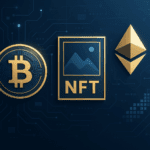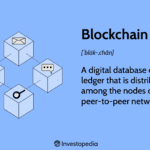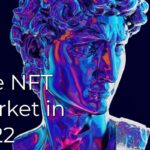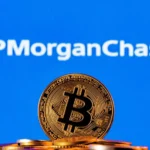Crypto Market Revolution: JPMorgan’s Stablecoin Embrace, NFT Surge, and Blockchain Innovation Drive Digital Finance Forward

Published: August 1, 2025 | Author: Manus AI | Category: Cryptocurrency
Executive Summary
The cryptocurrency and blockchain landscape is experiencing unprecedented transformation as traditional financial institutions embrace digital assets, NFT markets surge to new heights, and innovative blockchain projects secure major funding. This comprehensive analysis examines the latest developments shaping the digital finance ecosystem, including JPMorgan’s strategic pivot toward stablecoins, the remarkable 47.6% surge in NFT sales, and emerging blockchain technologies that promise to revolutionize real-world applications.
H2: JPMorgan’s Historic Shift: From Bitcoin Critic to Stablecoin Believer
The Transformation of Jamie Dimon’s Cryptocurrency Stance
In a remarkable reversal that signals the mainstream adoption of digital assets, JPMorgan CEO Jamie Dimon has publicly declared himself “a believer in stablecoins” during a recent CNBC interview [1]. This dramatic shift from one of cryptocurrency’s most vocal critics represents a watershed moment for institutional adoption of blockchain technology.

Dimon’s evolution from skeptic to supporter reflects the broader institutional acceptance of digital assets. The JPMorgan chief, who once called Bitcoin a “fraud” in 2017 and compared it to “tulip bulbs” in subsequent years, now acknowledges the practical value of blockchain technology and stablecoins in modern finance [1].
Strategic Partnership with Coinbase Signals New Era
The timing of Dimon’s comments coincides with JPMorgan’s announcement of a groundbreaking partnership with Coinbase, set to launch this fall [1]. This collaboration will enable Chase credit card holders to purchase digital assets directly through the Coinbase platform, while also allowing customers to redeem Chase Ultimate Rewards points for USDC stablecoins.
This strategic alliance represents more than a simple integration. It demonstrates JPMorgan’s commitment to meeting customer demand for cryptocurrency services, as Dimon emphasized: “We’re going to accommodate… It’s what the customer wants, not what JPMorgan wants” [1].
Future Innovations: Bitcoin-Backed Lending on the Horizon
Looking ahead, JPMorgan is reportedly exploring the possibility of offering loans backed by Bitcoin as collateral, with a potential rollout as early as 2026 [1]. This development would mark another significant milestone in the bank’s digital asset journey, potentially opening new revenue streams while providing customers with innovative financial products.
The bank’s deposit coin initiative and broader stablecoin issuance plans further underscore its commitment to understanding and excelling in the digital asset space. As Dimon noted, the goal is to “understand it and be good at it” [1].
H2: NFT Market Explosion: $574 Million July Surge Signals Renewed Interest
Record-Breaking Sales Performance
The NFT market has demonstrated remarkable resilience and growth, with July 2025 sales reaching $574 million, marking a substantial 47.6% increase from June’s $388.9 million [2]. This performance represents the second-highest monthly total of 2025, signaling renewed investor confidence and market maturation.

The surge was primarily driven by Ethereum-based collections, which accounted for $275.6 million in sales—nearly half of the global total [2]. This dominance reinforces Ethereum’s position as the leading blockchain for NFT transactions and highlights the correlation between ETH price movements and NFT market activity.
Market Dynamics and Buyer Behavior
Despite the impressive sales figures, the NFT market is experiencing a fascinating shift in participant behavior. The number of active buyers decreased by 17% to 713,085, while the number of sellers increased by 9% to 405,505 [2]. This trend indicates market consolidation, with fewer participants making larger, more significant transactions.
The average sale price for NFTs reached $113.08, the highest in six months [2], further underlining a shift toward premium assets and high-value trades. This premiumization trend suggests that the NFT market is maturing beyond speculative trading toward genuine value recognition for digital assets.
Leading Collections and Platform Performance
High-value collections such as CryptoPunks and Pudgy Penguins dominated the market, with CryptoPunks alone generating over $69.2 million in 30-day trades [2]. These established collections continue to command premium prices, demonstrating the importance of brand recognition and historical significance in the NFT space.

The overall NFT market capitalization rose 21% in July, reaching over $8 billion [2]. This growth coincided with Ethereum’s price moving above $3,900, highlighting the strong correlation between cryptocurrency valuations and NFT market performance.
Cross-Chain Competition and Market Share
While Ethereum maintains its dominance, other blockchain networks are experiencing varied performance. Cardano’s NFT sales doubled during the period, while Polygon and Binance Smart Chain NFTs experienced over 50% declines [2]. This divergence signals Ethereum’s growing dominance in the NFT ecosystem and the challenges facing alternative platforms.
H3: Blockchain Innovation: Subzero Labs Raises $20 Million for Real-World Applications
Funding Round Details and Strategic Vision
Subzero Labs has successfully raised $20 million in a seed funding round led by Pantera Capital, with participation from Variant, Coinbase Ventures, and Susquehanna Crypto [3]. This significant investment underscores growing investor confidence in blockchain technologies designed for practical, real-world applications.
The startup, founded by former Mysten Labs engineers Ade Adepoju and Lu Zhang, aims to address the fundamental challenge facing blockchain technology: creating networks that are genuinely useful for everyday applications rather than purely speculative purposes [3].
Technical Innovation and Market Positioning
Subzero Labs is developing a new blockchain called “Rialo,” an acronym for “Rialo isn’t a layer 1” [3]. This innovative approach seeks to overcome the limitations of existing blockchain architectures by focusing on real-world application requirements rather than theoretical capabilities.
CEO Ade Adepoju, who previously worked at AMD, Dell, Netflix, and Mysten Labs, brings significant technical expertise to the project [3]. His experience in building the Sui blockchain from conception to launch provides valuable insights into the challenges and opportunities in blockchain development.
Market Opportunity and Competitive Landscape
The founders argue that despite the proliferation of blockchain projects, none are sufficiently optimized for real-world applications. As Adepoju explained, “When you actually ask, ‘do we need another one?’ it’s like asking, ‘do we need another iPod?’ No, we don’t, but we definitely need an iPhone” [3].
This perspective reflects a broader industry trend toward practical blockchain applications that solve genuine problems rather than creating solutions in search of problems. The $20 million funding round validates investor appetite for blockchain projects with clear real-world utility.
H2: Market Analysis and Future Implications
Institutional Adoption Accelerates
The convergence of JPMorgan’s stablecoin embrace, robust NFT market performance, and innovative blockchain funding represents a significant inflection point for the cryptocurrency industry. Traditional financial institutions are no longer questioning whether to engage with digital assets, but rather how to do so effectively and profitably.

This institutional adoption is driving increased legitimacy and stability in cryptocurrency markets. When major banks like JPMorgan publicly support stablecoins and blockchain technology, it signals to other institutions that digital assets are becoming an essential component of modern financial infrastructure.
Technology Maturation and Real-World Applications
The success of projects like Subzero Labs indicates that the blockchain industry is maturing beyond speculative applications toward genuine utility. Investors are increasingly focused on projects that solve real problems and create tangible value for users.
This shift toward practical applications is essential for long-term industry growth. As blockchain technology becomes more user-friendly and applicable to everyday problems, adoption rates are likely to accelerate across various sectors.
NFT Market Evolution and Sustainability
The NFT market’s evolution toward higher-value, lower-volume transactions suggests a maturing ecosystem that prioritizes quality over quantity. This trend is positive for long-term sustainability, as it indicates that participants are making more thoughtful investment decisions based on genuine value rather than speculative hype.
The strong correlation between Ethereum price movements and NFT market performance also highlights the interconnected nature of the cryptocurrency ecosystem. As Ethereum continues to evolve and improve its scalability and efficiency, the NFT market is likely to benefit from these technological advances.
H2: Investment Implications and Strategic Considerations
Portfolio Diversification Opportunities
The current market dynamics present compelling opportunities for investors seeking exposure to the digital asset ecosystem. The combination of institutional adoption, technological innovation, and market maturation creates a favorable environment for strategic investments.
Investors should consider diversifying across different segments of the cryptocurrency market, including established cryptocurrencies like Bitcoin and Ethereum, emerging blockchain projects with real-world applications, and high-quality NFT collections with strong brand recognition.
Risk Management and Due Diligence
Despite the positive trends, investors must remain vigilant about the inherent risks in cryptocurrency markets. The volatility that characterizes digital assets requires careful risk management and thorough due diligence before making investment decisions.
The correlation between different segments of the cryptocurrency market also means that diversification within the digital asset space may not provide the same risk reduction benefits as traditional portfolio diversification strategies.
Long-Term Growth Prospects
The fundamental drivers supporting cryptocurrency adoption—including technological innovation, institutional acceptance, and regulatory clarity—remain strong. The developments highlighted in this analysis suggest that the digital asset ecosystem is becoming more mature and sustainable.
As blockchain technology continues to evolve and find practical applications, the long-term growth prospects for the cryptocurrency market appear increasingly positive. However, investors should maintain realistic expectations and prepare for continued volatility in the near term.
H2: Regulatory Landscape and Compliance Considerations
Evolving Regulatory Framework
The increasing institutional adoption of cryptocurrency and blockchain technology is driving regulatory clarity and standardization. JPMorgan’s public embrace of stablecoins reflects growing confidence in the regulatory environment for digital assets.
Regulatory developments will continue to play a crucial role in shaping the cryptocurrency market. Clear guidelines and frameworks will facilitate further institutional adoption while protecting consumers and maintaining market integrity.
Compliance Requirements and Best Practices
As the cryptocurrency market matures, compliance requirements are becoming more sophisticated and comprehensive. Financial institutions and cryptocurrency businesses must invest in robust compliance systems to meet evolving regulatory standards.
The partnership between JPMorgan and Coinbase demonstrates how traditional financial institutions and cryptocurrency companies can collaborate while maintaining compliance with applicable regulations. This model is likely to be replicated across the industry as institutional adoption accelerates.
Conclusion: A New Chapter in Digital Finance
The developments analyzed in this report represent a significant milestone in the evolution of digital finance. JPMorgan’s transformation from cryptocurrency skeptic to stablecoin supporter, the remarkable surge in NFT market activity, and the successful funding of innovative blockchain projects all point toward a maturing and increasingly mainstream digital asset ecosystem.

The convergence of institutional adoption, technological innovation, and market maturation creates a compelling narrative for the future of cryptocurrency and blockchain technology. As these trends continue to develop, the digital asset ecosystem is likely to become an increasingly important component of the global financial system.
Investors, institutions, and technology companies that position themselves strategically within this evolving landscape stand to benefit from the continued growth and development of digital finance. However, success will require careful navigation of the risks and opportunities that characterize this dynamic and rapidly evolving market.
The cryptocurrency revolution is no longer a question of “if” but “how” and “when.” The developments highlighted in this analysis suggest that the transformation of global finance through digital assets and blockchain technology is accelerating, creating unprecedented opportunities for those prepared to embrace this new paradigm.





